PERIKLES (c. 490–429 BC) Ancient Greek politician, strategist...

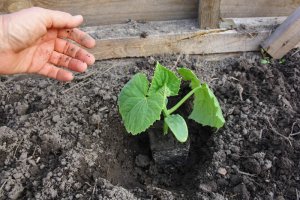
Fresh healthy fruits can be harvested even in the cold season. In greenhouses and greenhouses better to grow hybrids that do not require pollination.
Want to know more? Subscribe to our VK public, there is all the most delicious from the editors and interestingness from readers:
In contact with
Suitable plants with not too sprawling lashes, able to feel comfortable in the confined space of the greenhouse. Determinant forms preferred, with indeterminate cucumbers, you will have to remove the lateral processes and pinch the growth points.
Best for landing suitable seeds 2-3 years old. They are characterized by increased germination, and in the future they guarantee a good harvest. Very old seeds should not be used.
How to plant cucumbers? Before planting seeds material is checked for germination by dousing them with salt water. For planting, seeds that have sunk to the bottom are selected. After selection, they are washed and treated with a growth stimulator. Then comes sprouting in damp cotton. To improve germination, seeds wrapped in a damp cloth are placed in a refrigerator for several days.
Cucumbers prefer light. Suitable mixture of garden soil with peat and humus, it is possible to add washed river sand, sawdust or vermicult. For greater nutritional value, you can add superphosphate, potash fertilizers or wood ash.
cucumbers do not tolerate picking, it is safer to grow them in individual containers: peat tablets, plastic or paper cups, structures rolled up from plastic film.
How to plant? 2 seeds are planted in each container with a slight depth. After germination, the weakest sprout is cut off above the ground. Can't pull it out so as not to damage the roots of another plant.
Seedlings are placed in a warm, well-lit place. Tender sprouts do not tolerate drafts well, they need bright lighting. For better development, fluorescent lamps are strengthened above the plantings, extending daylight hours. Seedlings need to be watered 1 time in 5 days warm soft water using a fine-meshed watering can or spray bottle.
 After unfolding the first pair of true leaves, seedlings can be fed with a weak solution of mullein or a mineral complex specially designed for cucumber seedlings.
After unfolding the first pair of true leaves, seedlings can be fed with a weak solution of mullein or a mineral complex specially designed for cucumber seedlings.
It contains nitrogen and potassium necessary for the successful development of plants. Next top dressing held before transplanting seedlings for permanent residence. When you can plant cucumbers in a greenhouse, read on.
When are cucumbers planted in a greenhouse? For planting in a greenhouse suitable seedling, reaching 25 days of age. Before transplanting, the soil is carefully loosened, the remains of plants and other foreign inclusions are selected from it. The soil is recommended to be disinfected, spilling a hot solution of potassium permanganate or copper sulfate.
How to plant cucumbers in a greenhouse, at what distance? The scheme for planting cucumbers in a greenhouse is as follows: distance between cucumbers in a greenhouse should be 35 cm from each other, wide aisles are required.
Before planting, humus mixed with wood ash is laid out in the holes. In order not to injure the delicate roots, landing in the greenhouse of cucumbers (seedlings) produced by transshipment, i.e. placed in the hole along with a clod of earth.
If the plants were grown in peat pots, then the further cultivation technology is to cut them for better root germination. Freshly planted seedlings sprinkled with soil, the surface is slightly tamped. It is impossible to deepen the seedlings, this can provoke root rot. After planting, the plants are watered and sprinkled with a thin layer of peat.
How cucumbers are planted in a polycarbonate greenhouse in this video:
How to care for cucumbers in a greenhouse? Cucumbers need high humidity. Ventilate the greenhouse only in warm weather, drafts are contraindicated for plants. Ideal humidity level from 75 to 85%. you need warm soft water, preferably settled.
From aphids helps soapy water, flying insects destroyed with insecticides. Toxic preparations can be used only before flowering begins.
Spraying with phytopreparations or a solution of potassium permanganate is also useful. They help not only from pests, but also from powdery mildew, real or false.
Features of growing cucumbers in polycarbonate greenhouses from "A" to "Z".
How to grow cucumbers in a polycarbonate greenhouse? For growing cucumbers in winter capital insulated structures are needed. The best option is from cinder blocks and metal, covered with sheets of cellular polycarbonate.
Such the greenhouse is equipped with vents for ventilation, double doors with vestibule, system . More expensive industrial buildings are equipped with a fogging system and automatic shades for shading on hot summer days.
How to plant cucumbers in a polycarbonate greenhouse? In summer time cucumbers can be grown in light greenhouses without heating. They are covered with a film, but it is better to use polycarbonate. It does not interfere with normal insolation, but it dissipates the hot rays of the sun well, preventing them from burning delicate leaves.
in the greenhouse polycarbonate an ideal microclimate is created. Together with cucumbers, they can grow spicy, or vegetable crops, early and. How to grow cucumbers in a polycarbonate greenhouse, we hope we have explained in general terms.
Additional cultures. They not only increase the productivity of greenhouses, but also protect cucumbers from weeds and additionally nourish the soil.
How to grow cucumbers in a greenhouse early? Picking cucumbers in a greenhouse depends on the variety. The earliest cucumbers in the greenhouse form ripe fruits within 30-35 days after germination. In later cucumbers, 45-50 days pass from planting to harvest.
How long does a cucumber bear fruit in a greenhouse? There are varieties with an extended fruiting period, allowing you to cut the fruit throughout the season. There are also hybrids with a bouquet type of ripening.. They tie many small cucumbers in one bosom, ripening goes amicably and requires a one-time cut.
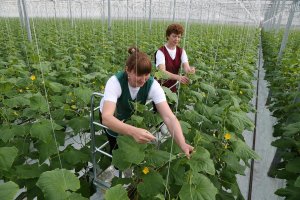 Cucumbers are best cut in the early morning. The fruits are torn off by hand or cut off at the very base so as not to damage the lashes and break off the leaves. Plants are fragile injured bushes stop growing and stop bearing fruit.
Cucumbers are best cut in the early morning. The fruits are torn off by hand or cut off at the very base so as not to damage the lashes and break off the leaves. Plants are fragile injured bushes stop growing and stop bearing fruit.
How many cucumbers can be harvested from 1 square meter of greenhouse? yield cucumbers from 1 sq m (square meter) in the greenhouse, approximately 30 kg, based on the fact that 5-7 kg will be collected from one bush.
greenhouse cucumbers grown in fertile soil, have a pleasant rich taste, they are beautiful and good for the health. Planting and caring for cucumbers in a greenhouse is not such a difficult process to abandon them. Even novice gardeners can grow cucumbers in a greenhouse. And growing early cucumbers in a greenhouse will replenish your body with vitamins.
Experimenting with varieties and properly caring for plantings, stable yields can be achieved. We told you all the secrets about growing cucumbers in a greenhouse.
Seeing the coveted green vegetable on the store counter in the cold season, we are happy to put it in the basket and do not even think about the path that it has gone from the status of a seed to our basket. But outside the store window is cold weather, sometimes even winter. Where did he grow up? How did he manage to get to our hands, gentle and short-lived? Greenhouse cucumber, there is such a variety of cucumber plants. He grew up in a proper, well-cultivated greenhouse.
Gardeners with many years of experience know that if you want to get an early harvest of cucumbers, you need to work hard and build at least a small greenhouse or greenhouse.
Greenhouses for cucumbers differ in design, type, size and appearance. You should choose for yourself based on your specific desires and capabilities.
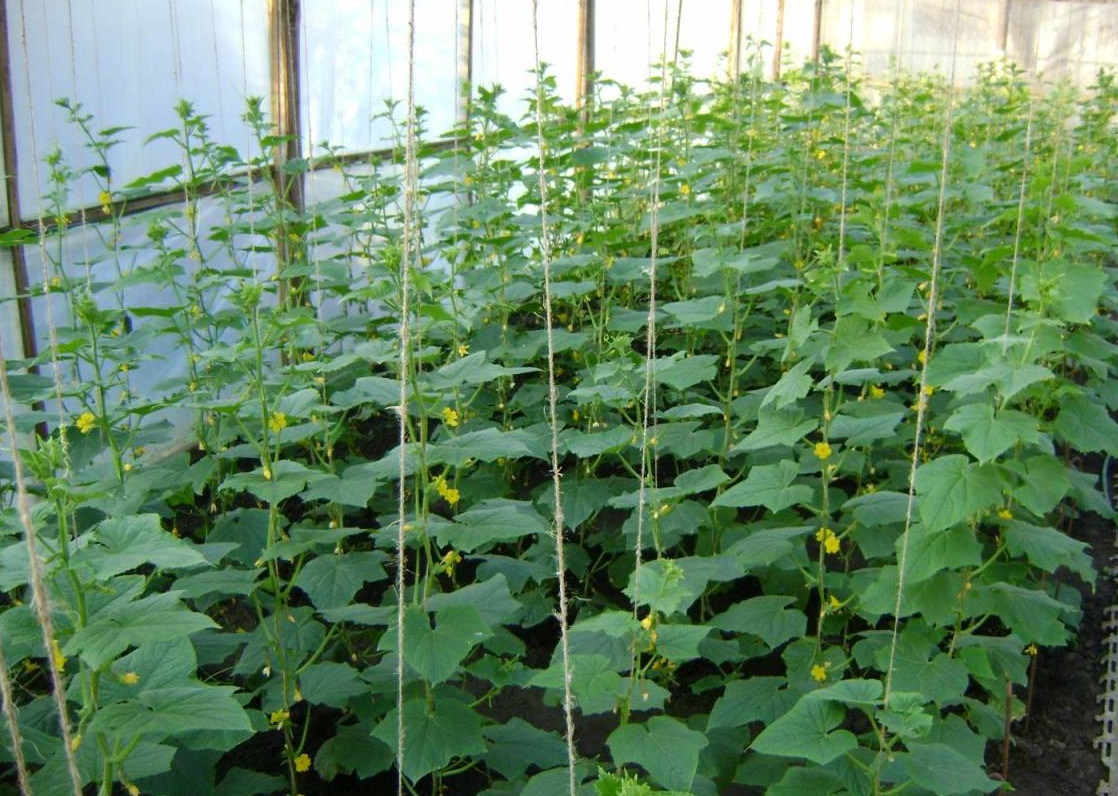
If you want to go into business and sell greenhouse cucumbers in the winter, then you should take into account that the construction will take a lot of time and capital investment. This means that it is necessary to prepare for the cultivation of winter cucumbers in advance.
Types of greenhouses that exist:
Each of these types of greenhouses has its own function and features of greenhouse care.
If you decide, start with a small temporary greenhouse. This will give you the opportunity to acquire certain skills in caring for cucumbers and maintaining the greenhouse itself. Practical knowledge is very important when growing greenhouse cucumbers.
The right greenhouse for cucumbers is one that will protect the plants from temperature changes outside the greenhouse, and provide cucumbers with a greenhouse effect, which is necessary to create moisture when growing cucumber tops.
The appearance of the structure does not play a special role, the main thing is that it is convenient for you to take care of it. Temporary greenhouses can be small, but its inner space must still ensure the growth of the plant until a stable high air temperature is established outside.
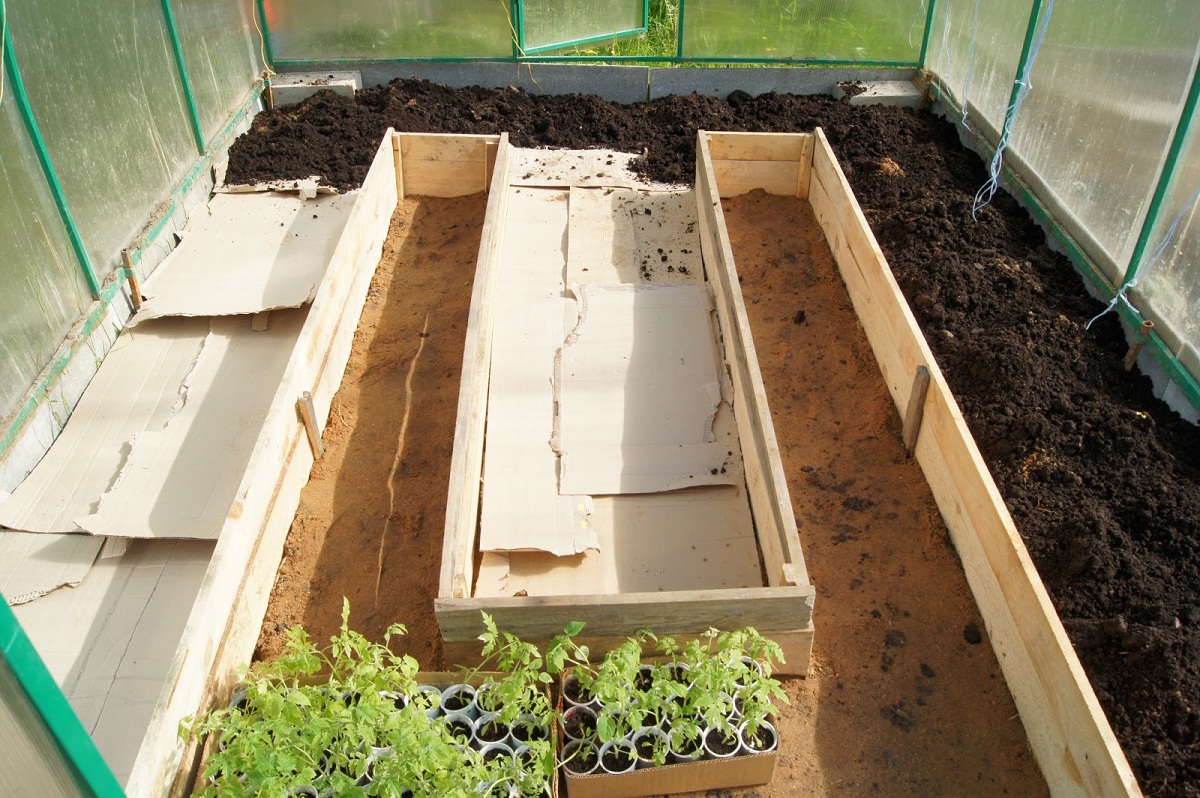
Material for can be:
A temporary greenhouse is best built from used materials, as after a while it will have to be dismantled.
In the period April - May, many summer residents build small greenhouses on their plots so that by the time good weather sets outside the window they will be opened and received in open ground grown up, ready for flowering and fruiting plants. This makes it possible to extend the harvest from spring to late autumn.
A small greenhouse for cucumbers is a profitable solution, it is easy to use, does not take much time and effort to build, and is mobile. It can be transferred from one site to another, and used to grow various types of vegetables and even fruits. Even early strawberries are grown in greenhouses.
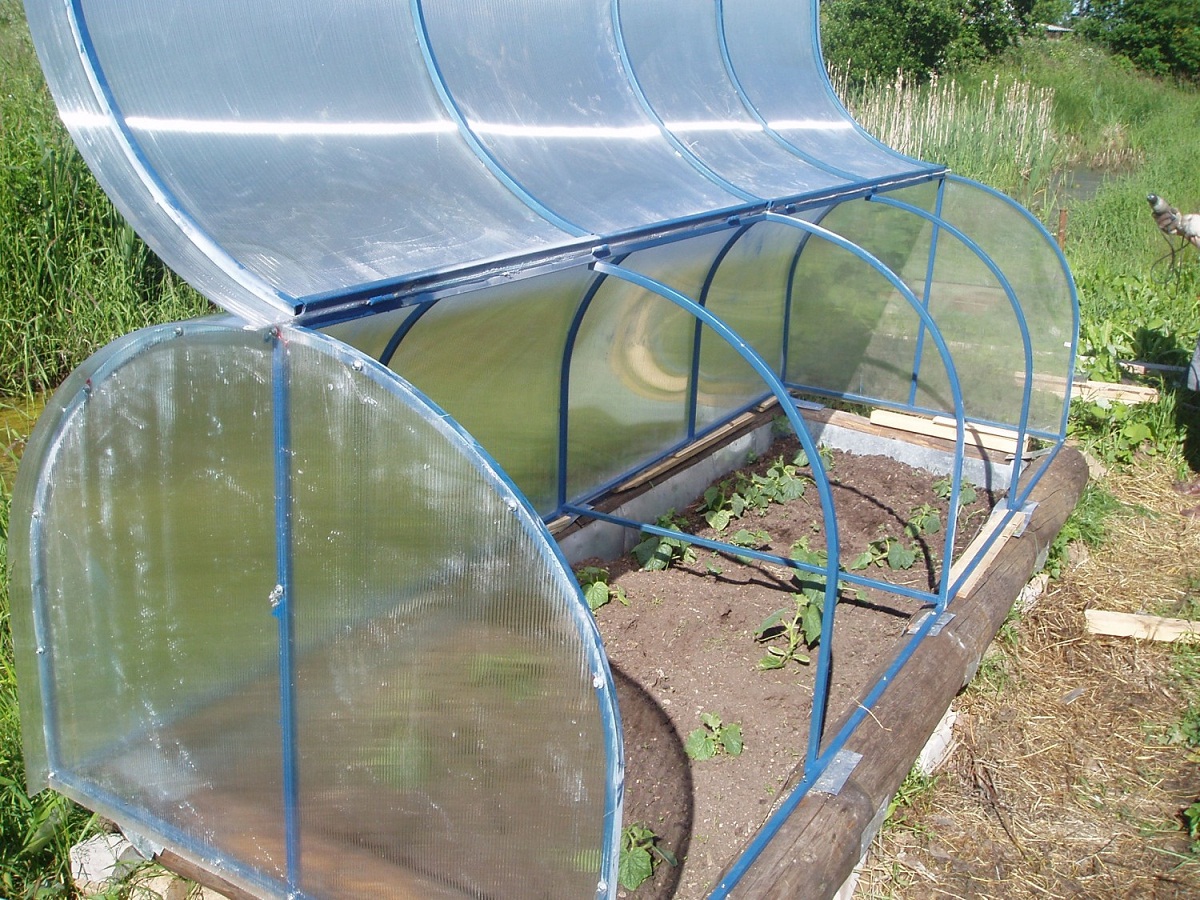
The most common are oval greenhouses, in which the frame is made of metal rods, and greenhouse film is used as a covering material. But there are also other forms of small greenhouses.
The main forms of small greenhouses:
In addition, ready-made greenhouses of various sizes and shapes can be found on the market. Naturally, their cost will differ from the cost of a do-it-yourself design.
Making your own, or installing a ready-made one, you should immediately provide yourself with convenient greenhouse care. Small, low-height greenhouses are best made so that they rise or open.
Cucumbers in a greenhouse require constant care for them. If you do not have free access to plants, then you will not be able to process them properly.
Agrotechnics for growing cucumbers includes more than fifty activities that need to be carried out with the plant, from the moment of planting seeds to harvesting dried tops. Even when you have no plants in the ground, you still have to take care of the future harvest, preparing for the new year.
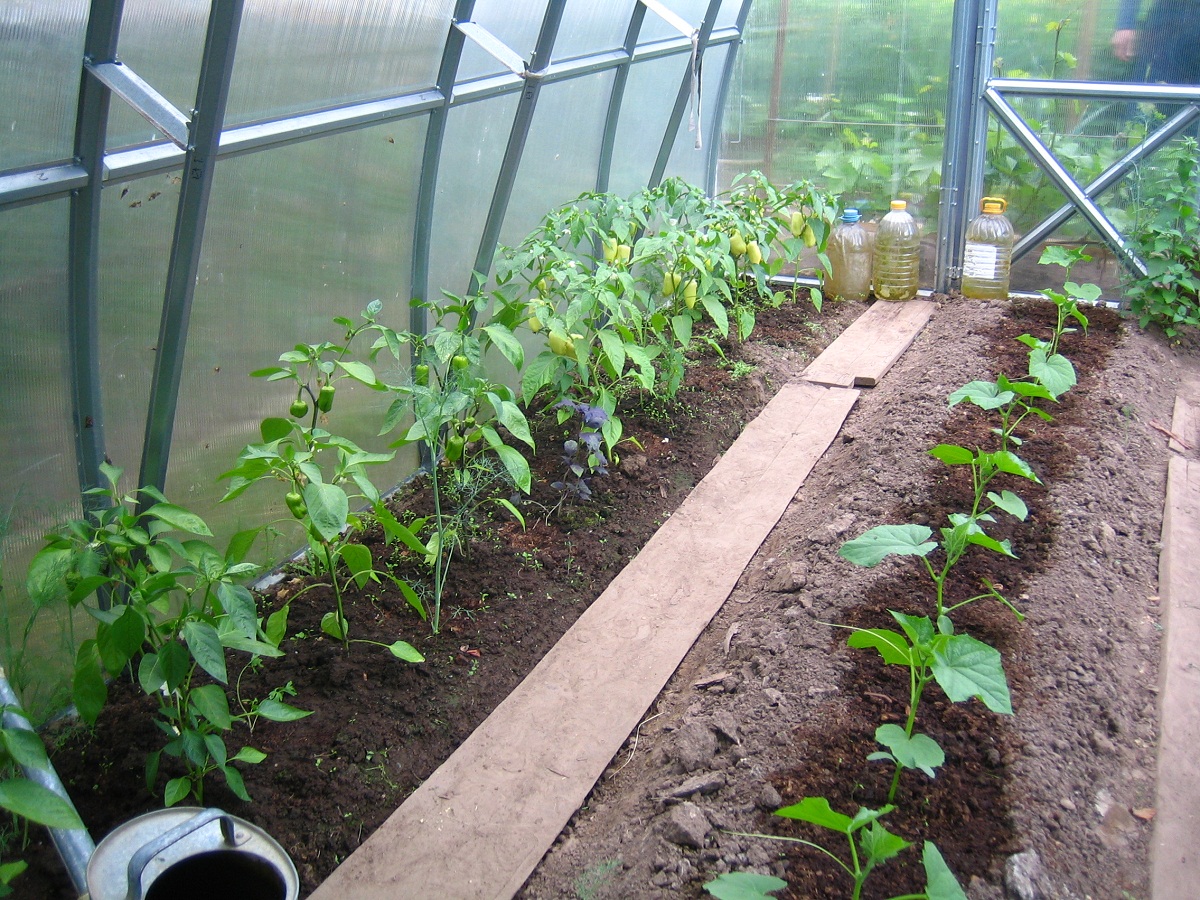
Agrotechnics of cultivation - the main activities:
By following all the techniques and rules for growing cucumbers, you will quickly achieve the desired result.
Despite such a long and painstaking care, it is very profitable to grow cucumbers in early spring. Missing the winter for vitamins and fresh vegetables, buyers in the market, as they say, select greenhouse cucumbers with their hands. Even the high price of this vegetable scares few people.
Cucumbers in the greenhouse in April are grown by many of those involved in the "cucumber business". Greenhouses in April do not require such costs as in winter, and the price of cucumbers is not inferior to winter.
In order to grow a greenhouse cucumber in April, you will need, first of all, a good, stationary, heated greenhouse, with good water supply and prepared soil.
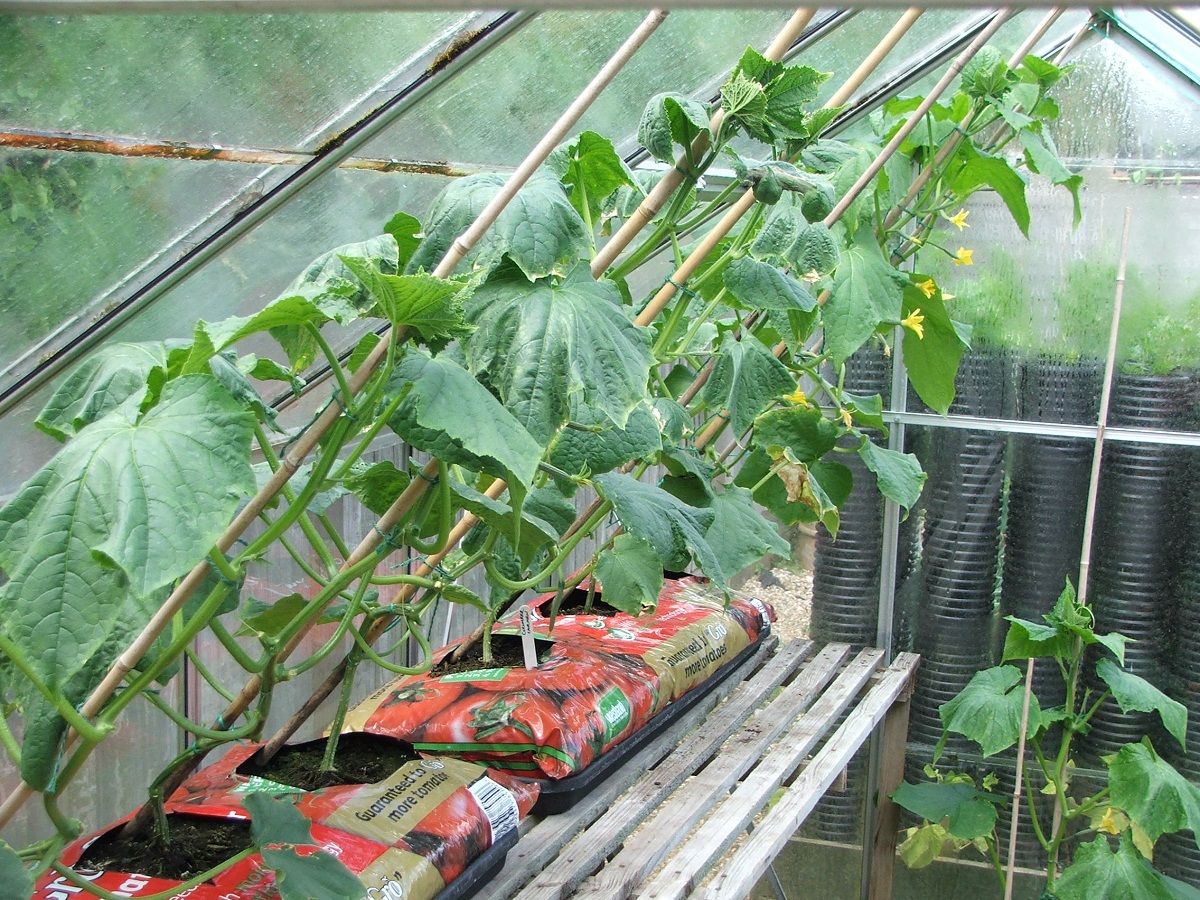
Materials needed for growing cucumbers in a greenhouse in April:
It is best to plant cucumbers in a greenhouse with seedlings, after germinating the seeds up to 4 leaves in a pot or box in a warm room.
There are May greenhouses in almost every summer cottage. Every owner of at least a small piece of land wants to try his own cucumbers as early as possible. To do this, a small structure is being built without heating, which protects the plant from sudden changes in temperature.
Cucumbers in the greenhouse in May are not long. As soon as the sun begins to warm the earth and the air to the level of 20-25 ° C, the greenhouse is removed, and the cucumbers continue to grow in the open field.
In large greenhouse enterprises in May, April, March, as well as all year round, cucumbers are grown in greenhouses. This is also done where the climate is not very warm. But in our latitudes at home for the summer, it is best to smoothly move on to growing cucumbers in the open field.
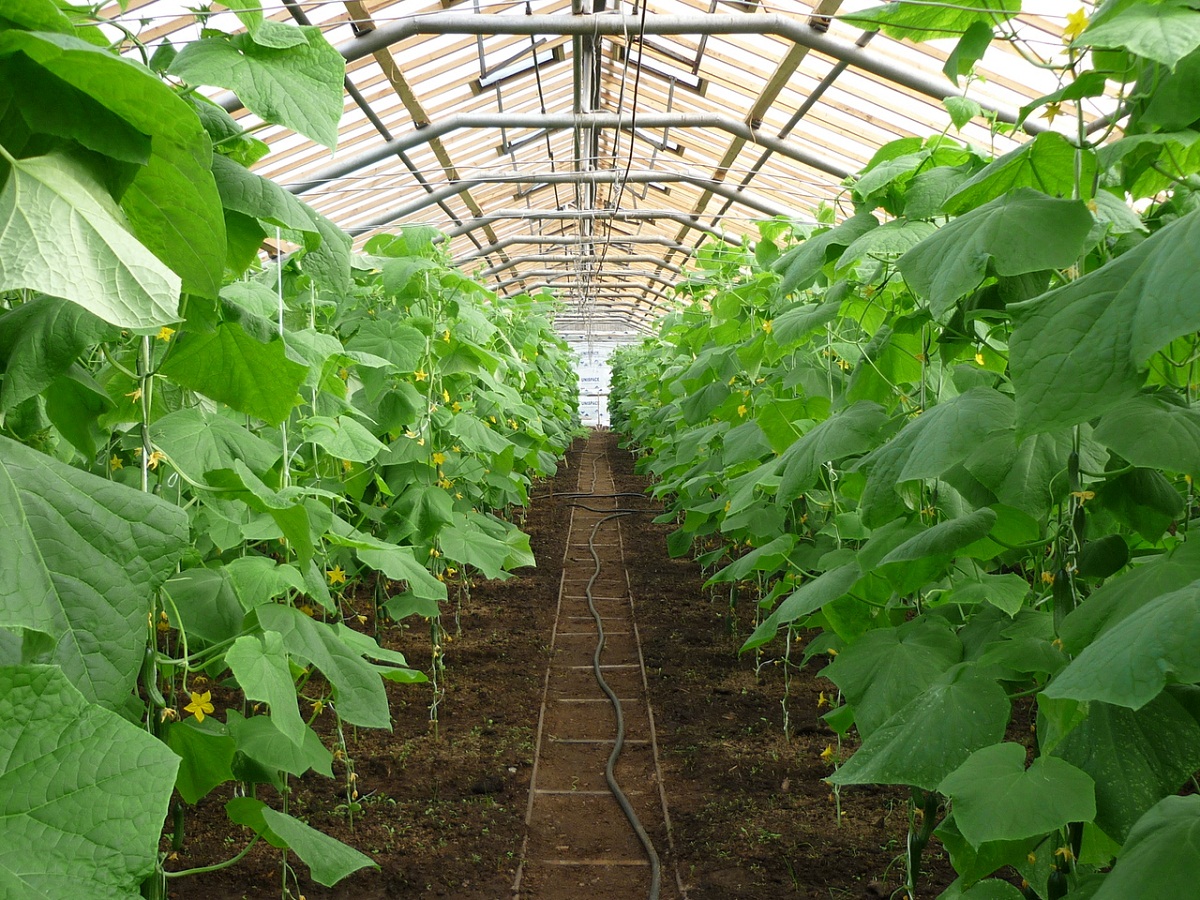
If you still decide to grow cucumbers in an unheated greenhouse during the month of May and throughout the summer, you will have the following positive aspects:
Which way you choose to grow cucumbers in May depends on your own preferences. But remember that various diseases develop in a humid environment in the summer and so that they cannot harm your cucumbers, you will have to carefully handle the greenhouse.
Nowadays, there is nothing unusual in the fact that in the middle of winter on the shelves of stores, the assortment of vegetables and fruits is practically not inferior to the summer one. The difference is only in price. And it is this price that so seduces lovers of growing vegetables for sale.
Cucumbers grown in a greenhouse in winter are in great demand. A winter greenhouse is an opportunity to earn a good sum during the cold season.
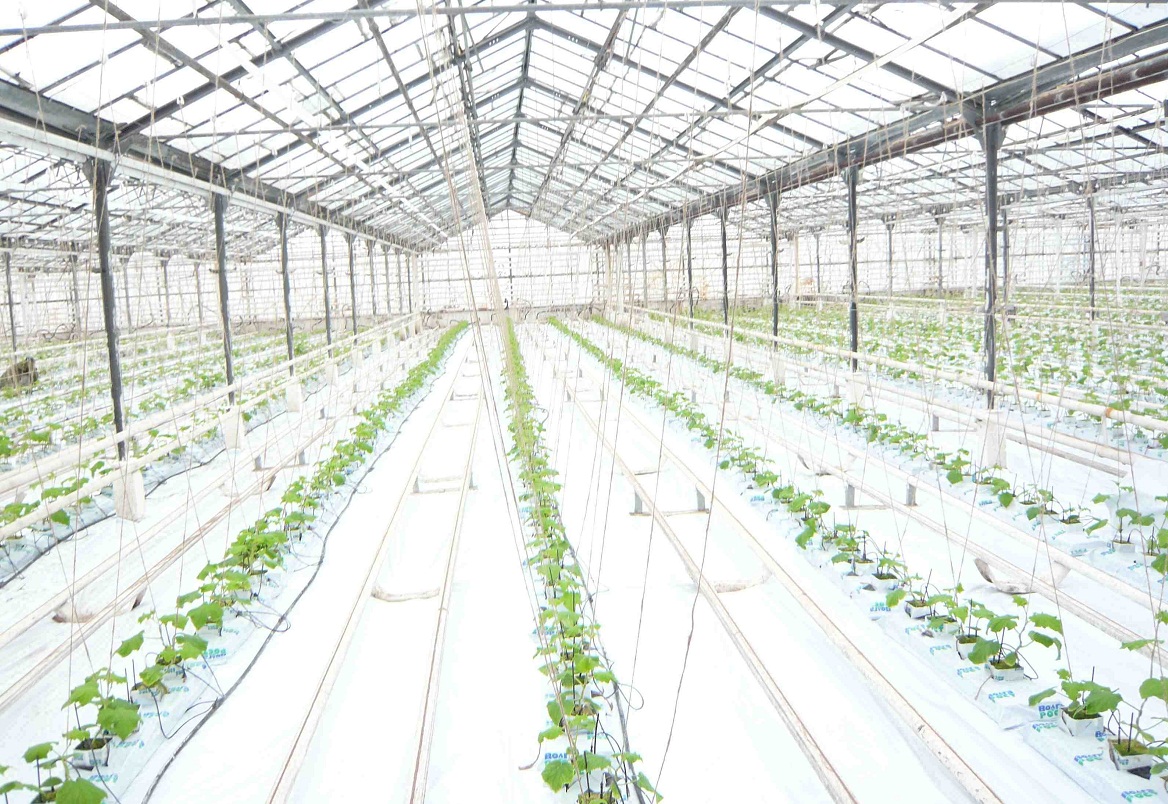
Winter greenhouses look different. They come in different sizes, different heights, glass, film, finished plastic. Their function is to protect plants from low temperatures and create favorable conditions for the growth and vegetation of cucumbers. Do not "run" cucumber greenhouses for planting seeds. It is better to germinate the seeds in containers in the house, and if this is not possible, then you can build a mini greenhouse of the "bread box" type in the greenhouse and plant the seeds there.
The winter greenhouse project includes:
The same project is suitable for a greenhouse with the “year-round” function. Don't build too much. It is very inconvenient to serve. The most optimal size is a little higher than your height in height, and 2-3 rows of cucumbers on the sides of the aisle in width. If you have a lot of land, then it is better to divide the plot into 2 greenhouses.
There are more than 200 varieties of cucumbers today. They have different tastes, colors, shades, they are the most unusual in shape and have a different growing season. Cucumbers also ripen in different ways.
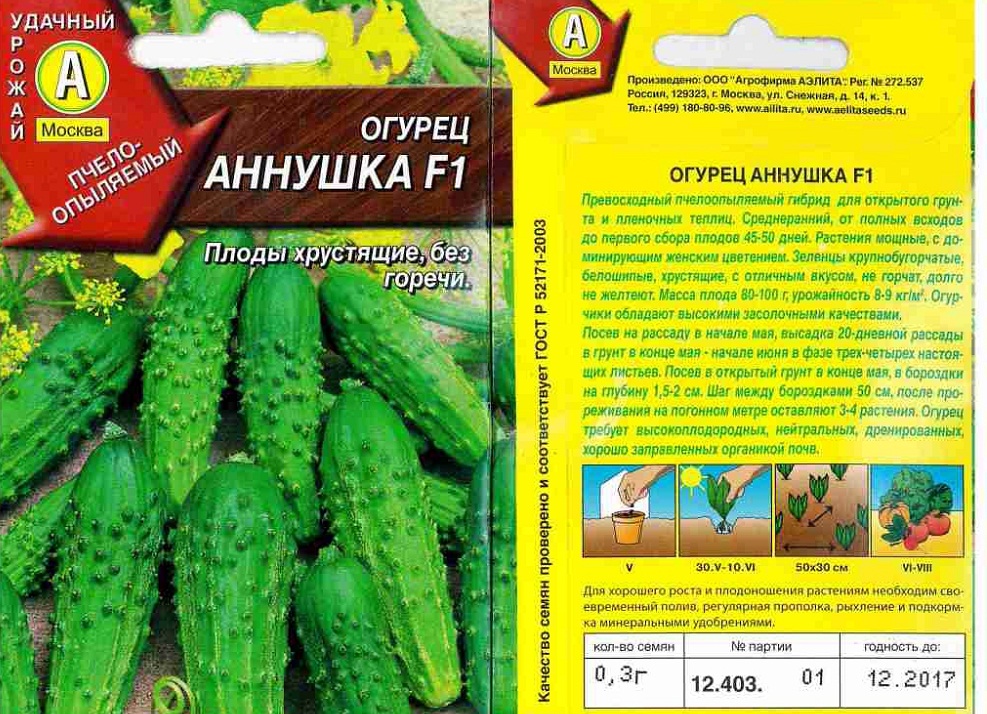
Choosing cucumber varieties for your greenhouse is not easy. You need to know one feature - for greenhouses, especially winter ones, it is better to choose hybrid bush varieties. For their pollination, bees or other insects are not needed, which are absent in winter and early spring. And bee-pollinated varieties of cucumbers are more suitable for summer, ventilated greenhouses, and open ground.
In addition, cucumbers are different in purpose: some, more juicy and long-fruited, are good for fresh consumption, others, those that are firmer, are more suitable for canning.
Varieties of cucumbers to choose from:
If you decide to become a gardener who successfully grows cucumbers in greenhouses for sale, or for your family, carefully study the cultivation of cucumbers, the rules for caring for plants and the features of greenhouse structures. Then your plants will be healthy and fruitful, and baskets are always full of green vegetables.
If you want to harvest vegetables all year round and still not pay much attention to environmental conditions, the greenhouse method of growing is what you need. This article is devoted to the issues of planting seedlings of cucumbers in a greenhouse from and other materials.
There are several sure signs to determine when it's time to. The most important of them is the appearance of 3-4 true leaves on the stem of young seedlings, which usually occurs a month after sowing the seeds.
Did you know? The prickly thorns that are dotted with young cucumbers are designed to remove excess moisture from the fruits. That is why in the morning on each of them you can see a drop of water.
However, the experience of many gardeners shows that the younger the seedling, the better it tolerates transplantation and the better the further survival. This phenomenon is due to the fact that a young, underdeveloped root system is less susceptible to injury during transplantation. 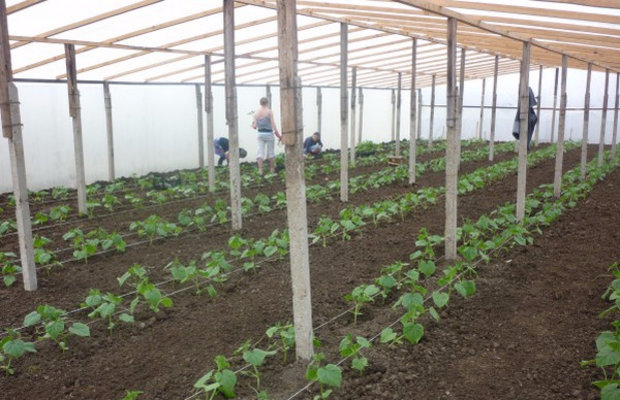
Experienced gardeners transplant seedlings in the cotyledon phase and get a survival rate tending to 100%. This may be evidence that carefully and accurately executed work can play a much more important role than the age of the seedlings. Popular varieties of cucumbers include:,. It is also important to remember that when in them it is quite possible to sow immediately to the place of final growth in order to prevent the stress caused to plants during the transplantation process. But at the same time, it is very important to remember that it guarantees a harvest in more early dates than at .
The first aspect that will help answer the question of how to plant cucumbers in a greenhouse correctly is the principle of building a greenhouse. Places with a flat surface or a slight southern slope are best suited for its installation. It is extremely important that the site is protected from the negative influence of the north and northeast winds. 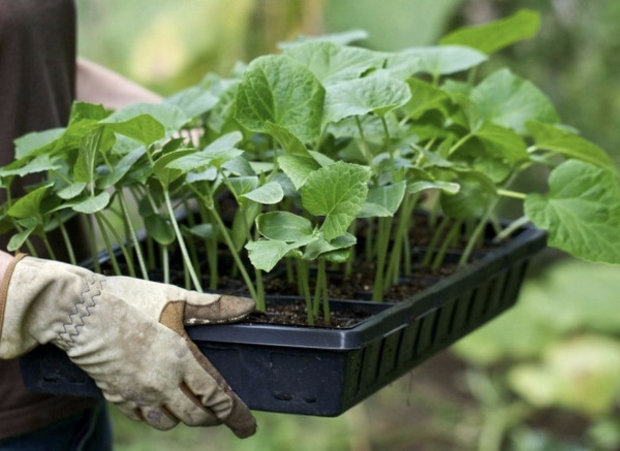
It is worth taking care of the construction in advance. In order to facilitate this process, it is recommended to choose places where groundwater occurs at a depth of about 2 meters. It is also important to make sure that the one on which it is planned to build a greenhouse is fertile enough and has properties suitable for creating various soil mixtures.
Did you know? During the heyday of Egyptian civilization, cucumbers were painted on sacrificial tables and placed in the graves of particularly distinguished pharaohs.
The ideal size of the greenhouse to be built should be calculated in such a way that the ratio of its volume and area is 2:1. Such a greenhouse boasts complete isolation from temperature regime reigning outside. 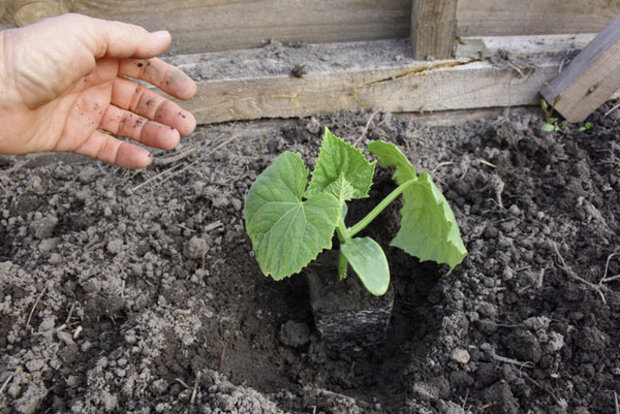
The temperature inside the greenhouse should in no case fall below 15-16 degrees, since its decrease can slow down the process of growth and development of seedlings, and if the temperature drops below 12 degrees, then the seedlings may even die. You can grow cucumbers not only in a greenhouse and open ground, but also more:, or, by the method.
Advance preparation of high-quality soil mixture is one of the main guarantors of an impressive harvest. It is worth remembering that not all soil is equally well suited for growing cucumbers, among the mandatory qualities that it must possess are the following:
Many gardeners for growing cucumbers recommend a soil mixture consisting of field soil and humus in a ratio of 5: 2: 3. The addition of coniferous trees to the mixture also shows itself very well. This additive during decay, in addition to releasing the necessary heat, will also flavor the soil with nitrogen-containing substances. 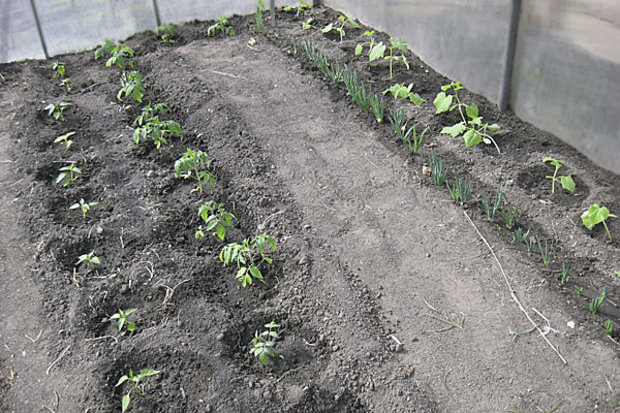
Soil preparation for planting cucumbers is carried out as follows. After preliminary digging to a depth of 20-25 centimeters, disinfection is carried out using, for example, a 7% solution. After processing, it is recommended to break up large clods of earth with a shovel or rake.
After a month has passed, various nutrients are added to the finished soil mixture, for example, and. After that, you can proceed to the direct process of planting or sowing. 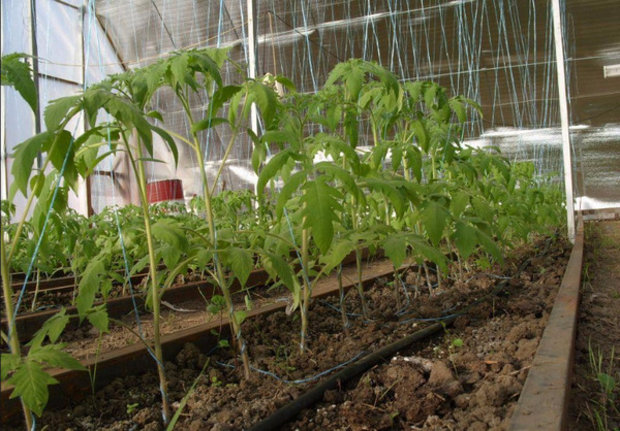
The scheme for planting cucumbers in a greenhouse is somewhat different from planting in open ground. For growing in greenhouse conditions, you can use various ways: planting on a flat surface, ridges or beds. Practice shows that landing on ridges and ridges gives the best results.
Important! To organize beds or ridges, it is necessary to dig a trench, the depth of which will be approximately equal to 40 cm, after which fresh manure should be laid on its bottom. From above, everything must be covered with fertile soil with a layer of 15 centimeters. There are no clear instructions on how far apart cucumbers should be planted in a greenhouse. However experienced gardeners came to the conclusion that the best distance between rows is a distance of 40-70 cm, between ribbons - about 75-90 cm, and in one row between plants should be at least 25-30 cm. The practice of growing cucumbers in greenhouses shows that for successful growth and development, cucumbers will definitely need a backup over time. In its quality, it is very convenient to use it from twine and wire, which is usually installed every 10-15 cm to a height of up to 1.5-2 meters. As the plant grows, it is gradually fixed to this structure. they will greatly simplify the processes of harvesting, plucking the plant and carrying out foliar dressings.
For the purpose of watering cucumbers, it is necessary to use exclusively warm water, which should not be too hot. It is best to leave the container in a room where it will warm up to room temperature. In winter, watering is best done in the morning, when the sun has already risen. In summer and in hot weather, it is worth watering every other day, best before dawn or after sunset. 
A mandatory procedure is a shallow one, which is designed to facilitate the process of air entering the root system of the plant and preventing it from rotting.
Important! Remember that the cucumber has a fairly superficially located root system, and therefore loosening should be done very carefully and no deeper than 5-7 centimeters. Ventilation of the greenhouse is a must during cool weather, the duration of such ventilation should vary depending on the temperature and averages 30-70 minutes. With the onset of warm weather, the greenhouse should remain open throughout the day.
For the purpose of cucumbers, it is recommended to use organic substances in the form of fermented diluted mullein, bird droppings, humus or infusions of various plants and herbs. It is worth alternating such top dressing with, which are best suited, designed specifically for pumpkin crops. The total number of feeding cucumbers in one season should not exceed five. 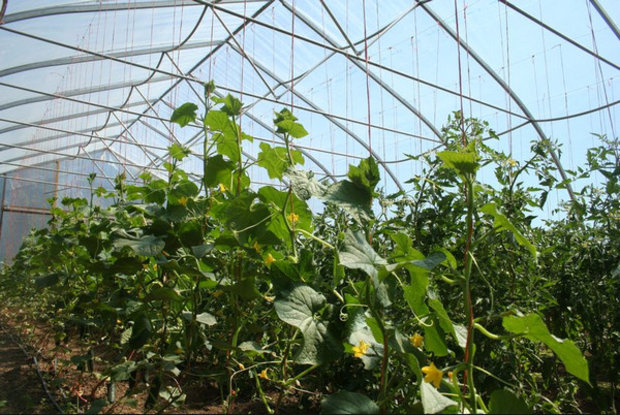
So, we hope that this article has helped you clearly understand when and how to plant cucumbers in a greenhouse. Remember that only the greenhouse method of cultivation will be able to provide you with a rich harvest throughout the year.
Was this article helpful?
Not really
The specifics of our climate is such that the cultivation of some garden crops in the open field sometimes turns into a big problem. Insufficient warming of the soil, although according to the calendar it is already the last month of spring; return frosts, which are far from uncommon even in May - all this (and not only) makes land owners think about installing a greenhouse. Optimally, from all points of view, from polycarbonate.
In such a "closed area" it is possible (with the right setting of the case) to harvest vegetables almost all year round, including everyone's favorite cucumbers (for about 9 months). Let us consider in detail the entire process of planting cucumbers in a polycarbonate greenhouse and give practical advice for each step in the form of instructions.
The judgment that there is no difference, the main thing is that the variety of cucumber is suitable for local conditions, is fundamentally wrong. It is necessary to take into account the specifics of growing crops in a greenhouse. And in any, and not just from polycarbonate. What is it, this feature?
The list is quite large - "Dynamite", "Hally", "Tempo F1", "Annushka", "Marinda", "Caprice", "Emelya", "Blanca F1", "Fawn", "Grenade", "Athlete", "Aristocrat F 1" and many others.
In order not to subsequently engage in exhausting pest control, to spend time on this and not to reject cucumber bushes, the entire greenhouse, as well as its filling, should be disinfected. The simplest preparation is a solution of bleach (0.4 kg per bucket of water). Literally everything is subject to processing from the inside - polymer pipes (greenhouse skeleton), polycarbonate sheets, shelves, drawers (beds) and inventory. It may take a whole day, but such work is fully justified. If in the process of growing cucumbers to adhere to elementary rules sanitation, the risk of diseases on the crop or soil is reduced to almost zero.
The soil is a separate issue. Change it or not? If signs of infection of plants grown in the greenhouse have already been identified, definitely. But with the land that was loaded a year ago (that is, relatively fresh), but something else was cultivated on it last season, it is somewhat more complicated. Here it is necessary to remember the rules of crop rotation, which means deciding what is easier (or more convenient) - to completely change the soil for cucumbers or to add appropriate dressings to it.
Watch a short video from step by step instructions planting cucumbers in a polycarbonate greenhouse:
Experienced summer residents advise - if there are few beds, then it is advisable to disinfect the soil in them as well. For example, take out and spill the earth with a weak (slightly tinted) manganese solution. In parallel, the internal cavity of all boxes (containers) is processed. The easiest method is to whitewash the bottom and walls. Or apply an appropriate preparation to them - any of the biofungicides ("Trichodermin", "Fitosporin", "Healthy Soil", "Phytocide") or another remedy against diseases characteristic of cucumbers.
The root system of this vegetable crop needs warmth. If you just fill up one earth, then most of the seeds simply will not germinate, and the shoots that appear will develop poorly. Therefore, for cucumbers, the soil is arranged in 2 layers (the so-called "warm" beds).
There are other technologies for growing this crop indoors. But for polycarbonate greenhouses, “warm beds” are the best option!
The bottom level is organic fertilizer. You can use rotted manure, compost, peat, humus and the like. Cucumbers love nutritious (fertile) soil, and this should be the starting point.
Disinfected soil is loaded from above. The layer thickness is at least 25 cm. What does it give? When moisture gets in (during watering the beds), organic matter begins to decompose. The result of this reaction is the release of heat. Consequently, the two-layer construction of the soil provides automatic heating first of the seeds, and then of the root system of shoots (vines) of cucumbers.
If the earth remains the same, without additional processing, then it is necessary to dig "channels" to the full depth and lay organic matter in them. The effectiveness of such “heating” is somewhat reduced, but in most cases this simplified technology is sufficient.
But how much you need to feed, it is better to decide on your own. The general recommendation is about 12±2 kg per m2 of plot. But here it is necessary to take into account the characteristics of the soil that is used. If the soil mixture is store-bought, then its recipe is indicated on the packaging. The composition of the substrate, prepared independently, is also well known to the gardener.
A separate but no less important question. For cucumbers, the maximum pH value is 6.5. To understand how relevant this is, it suffices to identify two reasons for such a rigid approach.
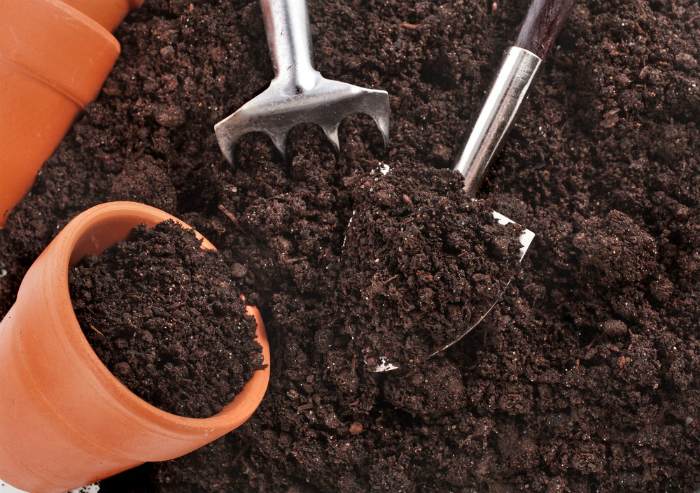
Cucumbers are specific plants. Unlike the same tomatoes, they do not form a bush as such. This culture is not in vain ranked as a liana family. As the tendrils of the shoots develop, they constantly stretch upwards, and this must be foreseen in advance, even before planting.
All you need is to equip a horizontal bar on which the upper ends of the vertical "threads" will be fixed. It will not work to fix them on the frame of the greenhouse, since it is sheathed with polycarbonate, and polymer pipes are used. It remains only then, as the shoots develop, to pull a series of ropes, twine or something like that. That is, to create supports along which cucumbers will crawl. If the meaning is clear, then it is not difficult to choose materials, a scheme and a method for manufacturing such a design.
Meet different opinions how best to grow cucumbers. For example, there is an article:. For those who grow seedlings at home, it is worth recalling that its readiness for moving to a greenhouse is determined by the number of antennae formed (at least 2) and leaves (5 - 6).
But still, most gardeners are convinced that since the greenhouse is made of polycarbonate, then doing seedlings at home is a waste of time. Planting should be done with seeds - this is the most optimal solution. But just taking them and sticking them in the ground does not mean that the harvest is guaranteed. The seeds also need to be cooked. This procedure is no different from the traditional algorithm of actions, which is applicable to the seeds of any garden / horticultural crop. Therefore, only a list of the main technological operations (as a reminder).
The question of the timing of the use of growth stimulants is quite controversial. Some believe that treatment (for example, with the Energen composition) should be carried out immediately after seed disinfection. Some gardeners are inclined to believe that a more rational solution is to spill the soil with a solution before planting cucumbers. Here it is more correct to focus on the recommendation of the manufacturer of the purchased drug. Independent interpretation, the invention of its own technology may not give the expected effect.
There is no big difference. It is enough to leave 5-6 cm between the holes; the same amount between the rows (with a multi-level landing).
Many experienced gardeners do just that. Why it is necessary to practice this in a polycarbonate greenhouse, how to do it correctly, can be clearly seen from the drawings.
During this period, it is necessary to ensure the temperature is not lower than 26 ºС. In the first days 3 - 4 after planting with seeds, it is desirable to organize round-the-clock illumination.
When the "color" appears, phosphates must be added to the soil. As soon as young cucumbers appear, you can switch to potassium-nitrogen top dressing.
The feasibility of introducing organic matter (manure, peat, and so on), as some sources advise, is very doubtful. All this is already in the ground, and duplication is absolutely not necessary. After all, a polycarbonate greenhouse is not an open-air garden. Nutrients do not “leave” to the depth and are not washed out of the soil, therefore it is absolutely pointless to additionally fertilize it with the same compositions.
Practical advice.
Quite often, cucumbers have whitened foliage, and at any stage of development.
There are two main reasons - low temperature or illness. How to proceed?
As a rule, such simple procedures help cucumbers in a greenhouse. If there is no effect, then the affected shoots will have to be removed in order to save the rest.
A polycarbonate greenhouse is used in different ways. This also applies to the cultivation of cucumbers. They can be grown for own consumption, with a reserve (to provide for relatives, for example) or for sale. But regardless of the required volume of the vegetable, the technology of planting and caring for it is unchanged. And how to arrange everything in a particular greenhouse, depending on the goal pursued, is easy to figure out.
Good luck to you, gardeners, in growing cucumbers, and a good harvest!
Growing vegetables in a polycarbonate greenhouse is a great way to grow lots of fruits. This article discusses in detail the topic of how to choose varieties of cucumbers for a polycarbonate greenhouse and how to grow them. The most important thing is that the polycarbonate greenhouse should have the most comfortable and favorable microclimate for growing cucumbers. Such greenhouses are quite durable and warm, and the growing process is basically only a pleasure.
In order for the cultivation of cucumbers in a polycarbonate greenhouse to give good results, it is necessary to choose the right varieties - this is very important, since not everyone is suitable for these purposes. In this case, the seeds must have certain properties for high-quality growth and yield. And when you choose the right varieties of seeds for planting, be sure to pay attention to such factors:
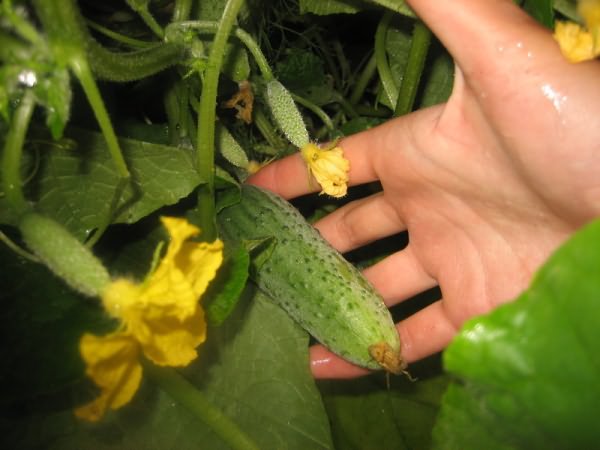
Be sure to choose the right varieties so that growing cucumbers brings you pleasure, and the harvest only pleases with its quantities.
Preparation and planting are the next steps in our consideration of growing in a polycarbonate greenhouse. Be sure to prepare and cultivate the soil in the greenhouse in advance. In order to disinfect the soil and get rid of harmful insects, treat the soil with a special bleach solution.
By the time the cucumbers are planted, the soil should be loosened so that it has a sufficient amount of both moisture and air. In order to get a crop as quickly as possible, in a short time, ready-made seedlings are usually planted in the soil. Previously, it will need to be grown in pots for three weeks. And at the time of transplantation, it is important to handle the root system very carefully and carefully so as not to damage it.
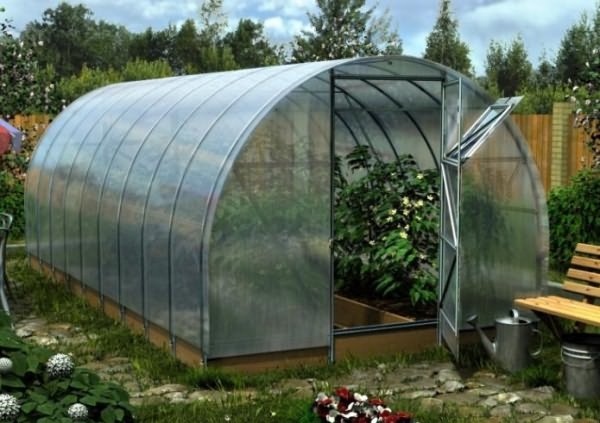
Since the greenhouse is made of polycarbonate, it is not necessary to pre-grow in pots. You just need to cover the greenhouse with a protective coating on top to create favorable conditions and a microclimate inside it. But as for the landing, there are several ways.
If all of you grew seedlings like that, then it needs to be planted in three weeks in the ground. The landing period for heated greenhouse conditions is the beginning of April or the last days of March. If there is no additional heating, then it is better to plant in early May.
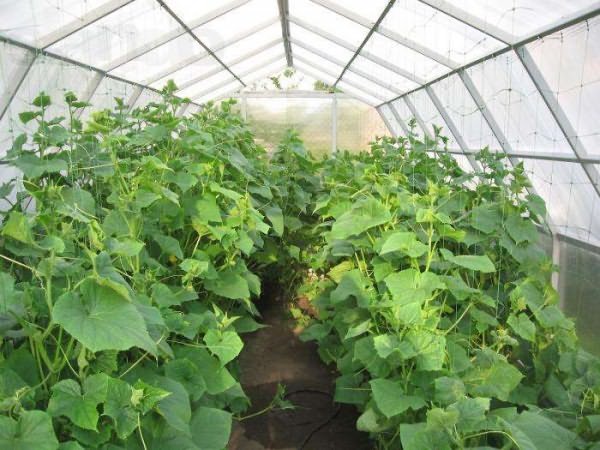
Make the distance between rows fifty centimeters, and between plants - up to thirty centimeters. Make holes ten centimeters deep each, at a distance of an elongated cord from each other. Before planting plants in the holes, fill them with fertilizer (peat humus up to 500 grams + superphosphate up to 10 grams + potassium salt up to 10 grams). After that, you will need to fill everything with warm water, at the rate of approximately one liter per plant. After such preparation, plant seedlings. And then completely cover each hole with earth and mulch it with a peat layer to a height of up to three centimeters.
Since cucumbers are quite thermophilic, the beds in the greenhouse should also be “warm”. The arrangement of beds plays an important role in growing cucumbers in a greenhouse. You can make them with compost or manure. If you will make a bed with manure, also make a trench for it, one meter wide. At the bottom of such a bed you put manure and on top of the soil, twenty-five centimeters high. It is not often necessary to fill a garden bed or sow seeds, count so that there are four cucumber bushes per square meter. A denser planting will negatively affect the quantity and quality of the crop. Also, the resulting bed can be covered with polyethylene on top and pulled over the arcs. This will contribute to an increase in temperature, respectively, sprouts will appear twice as soon. And growing cucumbers will only bring you pleasure.
It is desirable that the surface of the earth be embossed, on a small hill - so the cucumbers will grow better, and as a result you will reap a wonderful harvest.
After the plants are planted in the ground, their cultivation is just beginning. To avoid trouble in the future, you need to properly monitor watering, top dressing and temperature.
The most important and basic measures in growing plants are to loosen the soil correctly and in time, to ventilate the room well, and to water and feed cucumbers.
Humidity should be high. If the season is winter, then watering should be done approximately twice a week, and it is desirable to choose a sunny morning for this. To prevent the plants from getting sick, water them with warm water in winter. And the best way for watering is drip, in which case the water will not fall on the leaves and will not be able to burn them.
The earth must always be well loosened and allow enough air to pass through to the plants, this is important for the root system in order to prevent the plant from dying. But do this very carefully so as not to damage the roots at all. For ventilation in the greenhouse, open windows, vents. And if it's warm outside, leave them open all day.
As for top dressing, this is an important aspect. Fertilize with manure, it is possible in large quantities, since this will only benefit the cucumbers. You can also use rotted garbage, peat or sawdust for fertilizer. Cucumbers perceive only organic fertilizers well.
Cucumbers need to be fed only five times. The very first of them is during the flowering period, the remaining four times during the fruiting period.
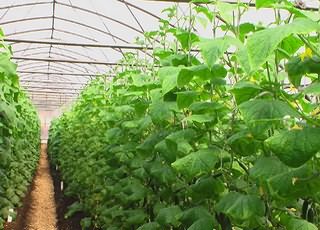
There are also nuances regarding fertilizer by type of soil. If you have it more sandy, you need to additionally fertilize with nitrogen fertilizers. If the soil is floodplain, it is worth using potassium fertilizers. When there is a decrease in atmospheric temperature, and, accordingly, the soil, then in order to maintain the vital activity of the root system of the plant, it is necessary to fertilize with ammonium nitrate (foliar top dressing).
In a polycarbonate greenhouse, the temperature for growing cucumbers should not fluctuate much and differ. It is impossible to lower the temperature to a level of thirteen to fifteen degrees, because plants in cold soil do not absorb water well and can get sick. The most suitable temperature level is room temperature, it can be up to twenty-five degrees.
If diseases and pests appear on plants, this is a very bad indicator. Because it can harm the quality and quantity of your crop. Often there are situations when the leaves may turn yellow. This may be due to lack of air, heat, and also from a lack of nitrogen or phosphorus. To prevent this, you need to monitor the plant and do the necessary procedures in time.
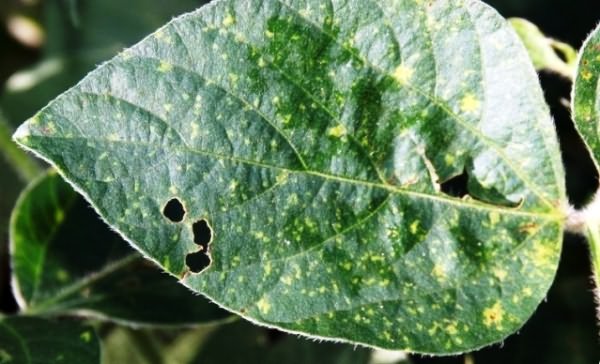
Plants are susceptible to a disease such as downy mildew - it can remain in the ground for several years. To prevent it from appearing, never water the plants with cold water. And if it appears, then for a while do not feed anything and do not spray the cucumbers.
Among the pests, one can name the Greenhouse Whitefly (you can get rid of it by removing the weeds in time, and you can also cover the window opening in the greenhouse with a double layer of gauze) and melon Aphids (to get rid of it, you need to remove the weeds and spray with tincture of hot pepper).
On the recording, an experienced gardener tells how to prolong the fruiting of cucumbers and how to properly rejuvenate their whips.
plodovie.ru
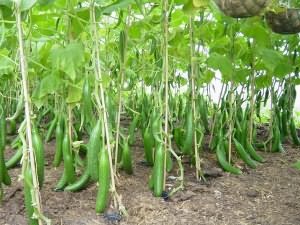
There is nothing easier than growing cucumbers in a greenhouse. This is not only an interesting activity, but a rewarding one. After all, how nice it is to have fresh cucumbers on the table in winter or early spring.
In a greenhouse, cucumbers give a much better yield than those grown in open conditions. In addition, the fruit itself is larger, juicier. To better understand the process from start to finish, it's best to watch a video on how to grow cucumbers in a greenhouse.
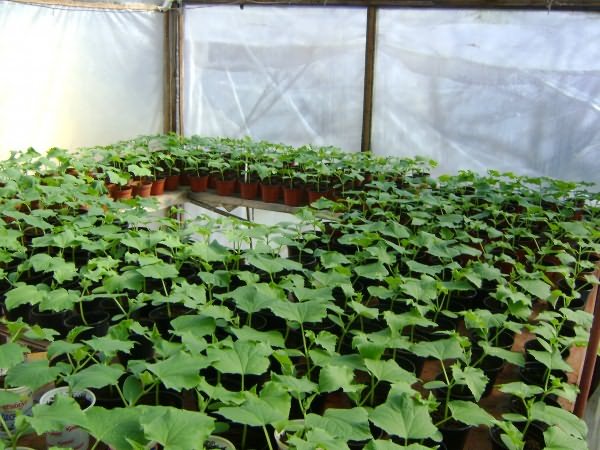
First of all, you need to decide on the design of the greenhouse and its location. For planting cucumbers, you need to find a flat area, preferably with a southern slope. Cucumbers love warm soil, so the site should receive enough sunlight. If the roots of cucumbers freeze, then you can forget about a good harvest. Plants can also die after watering with cold water.
The bed should be high. Manure will help to ensure this condition.
North and east winds should not blow on the site. It is unlikely that it will be possible to completely protect the greenhouse from all negative factors, therefore it is better to build a fence which will protect the structure.
Even before planting cucumbers, the planting scheme and the mode of watering vegetables are calculated. The owner of the site must know at what level groundwater occurs. For cucumbers, they should pass at a depth of about 1.5-2 meters.
After assessing the area of the site and the desired amount of crop, the size of the structure is selected. As a protective surface use ordinary polyethylene film, which is pulled at an angle of not more than 20 degrees. The best option is to equip a polycarbonate greenhouse.
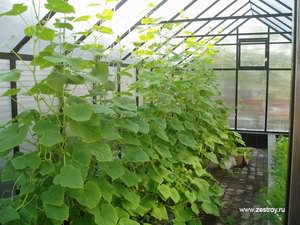
The walls of the greenhouse must be disinfected; harmful microorganisms can also accumulate on them. For processing, a solution of bleach is used(400 g of material per 10 liters of water).
The soil is made from the following components in equal proportions:
It is important that the acidity of the soil is low. The maximum acidity of the soil in which cucumbers can be planted in a greenhouse will be 6.5. Otherwise, you need to add lime for deoxidation.
Acidic soil favors the development of pests. In addition, cucumbers themselves do not respond well to acidic soil.
Preparing the soil for planting cucumbers in the greenhouse ends with the application of fertilizers. This is done shortly before landing. They bring into the ground:
After making the listed components, they pass through the beds with a rake.
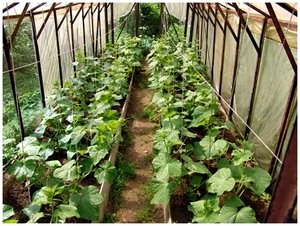
Planting cucumbers in a greenhouse is carried out either with the help of seeds or with the help of seedlings. Gardeners willingly share their experience in various forums, therefore easy to choose the most suitable landing method for your area.
Each method has its own advantages and disadvantages. If you sow the seeds right away, then there is a risk of getting a large number of empty flowers. Such plants will not bear fruit in the future.
To grow seedlings, you will have to spend more time and effort. But there are more chances to get a good harvest.
If the greenhouse is equipped with polycarbonate, then any method can be used. Negative impact from outside will be minimized.
As for the time of planting cucumbers in the greenhouse, then much depends on the region and its climatic conditions. You can plant seedlings in pots at the end of January, when the temperature reaches 23 degrees Celsius. And you can transfer it to the soil when the plant forms at least 4 leaves. The temperature in the greenhouse should be maintained at 25 degrees.
Regarding the winter cultivation of cucumbers in a greenhouse, the following can be noted. Cucumbers will grow in winter only in a polycarbonate greenhouse. Varieties for this are selected self-pollinated. Also, when choosing a variety you need to pay attention that they must withstand the lack of sun and low humidity.
But this does not mean at all that such varieties will be able to develop well in winter. All the same, they will have to be illuminated, sprayed and fertilized. Seeds begin to sow in December. Then the harvest will take place in mid-late February.
In winter, you need to take care of the formation of the above-ground part of the plant. In order for the cucumber to develop successfully, it is tied up.
The following varieties are suitable for growing cucumbers in a greenhouse:
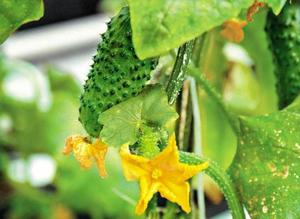
After purchase, the seeds are soaked in water for 5 days. The water temperature should be 5-18 degrees. After that, the seeds should germinate. Now they can be planted in separate vessels, the size of which is approximately 5 * 5 cm.
In separate containers, seedlings will develop for approximately 20-25 days. During this time, at least 3-5 leaves should appear.
When planting seedlings in a greenhouse, you need to adhere to a distance of 15 cm, it is better if it is possible to withstand up to 25 cm. There should be at least 50 cm between rows. The planting pattern can be clearly seen on the video.
When choosing seeds, it is important to pay attention to the method of pollination. There are varieties:
Cucumbers require constant attention. Care consists of the following manipulations:
Watering cucumbers in a greenhouse can only be done with warm water. In winter, watering is carried out in the morning and only on sunny days. If it is a warm season outside, then cucumbers are watered twice a week. If the weather is warm and sunny, then this is done every other day. For 1 square meter you will need 7 liters of water.
Loosening is carried out from time to time. It doesn't have to be deep. This is done in order to penetrate air to the roots. So they will develop better and eliminate the risk of decay.
The greenhouse is ventilated periodically. While work is underway on watering or loosening, the cloth is slightly raised. If the day is warm and calm, then you can open the greenhouse for the whole day.
Chicken manure or various herbs, such as nettle, are applied as fertilizer. You can take fertilizers that are specifically designed for pumpkin crops.
Even in winter, cucumbers in greenhouses love a large amount of top dressing. Good for manure. Both mineral and organic fertilizers are used., which contribute from the beginning of flowering until the appearance of the crop. During the growth period, they must be applied at least 5 times.
It is advisable to do root and foliar top dressing. Root do in sunny weather, foliar in cloudy. The plant responds well to trace elements. The leaves can be sprayed with the following solution: 10 liters of water, 8 g of potassium salt, 10 g of superphosphate, 5 g of saltpeter.
The formation of the bush begins immediately after planting seedlings. In the axils, excess flowers are removed. When the first side shoots reach a length of 20 cm, pinch them. The following shoots are pinched when they reach 40 cm, the last at 60 cm. At the same time, they are immediately tied up. The bush needs to be formed so that its height does not exceed 150 cm. These moments are well presented on the video.
The presence of gourd aphids is indicated by the affected flowers and the underside of the leaves. Powdery rose can be identified by dry spots on the leaves. To fix the problem, the leaves are treated with copper sulphate.
garden.guru
Growing cucumbers in a greenhouse can be done all year round. It all depends on the conditions that are created for this and on the variety of the crop itself, since the amount of the crop depends on it.
How to grow cucumbers in a greenhouse?
For this you need:
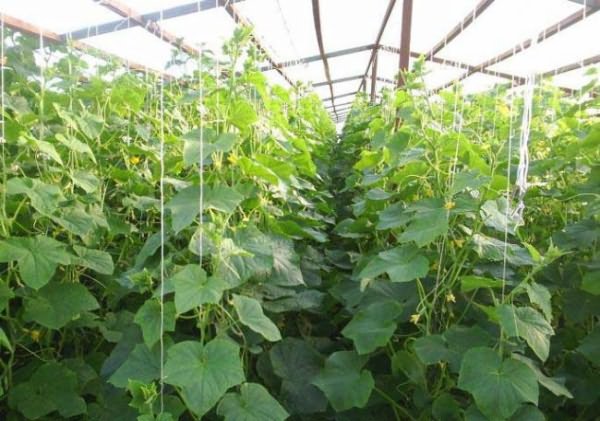
You can grow cucumbers in a greenhouse both in winter and in summer. If the design of the greenhouse allows, then experienced gardeners are engaged in the greenhouse business all year round.
So:
What can be greenhouses for growing cucumbers:
The choice of a frame for the manufacture of a greenhouse largely depends on how long the structure will be used.
At the moment, there are several options for materials for the manufacture of the frame:
Let's take a closer look:
Advice. For the reinforcing cage, it would be better to use a simple polyethylene film, which currently has a large assortment and will not be inferior in its properties to polycarbonate, which is most often used for greenhouses.
Advice. If the design will be used to grow cucumbers in a greenhouse in the winter, then it is better to use cellular polycarbonate, which is capable of maintaining a constant temperature inside with proper and high-quality heating.
Advice. Both that and that type of frame can be made with your own hands. If the greenhouse is large, it is best to pre-fill a small base for it in order to make the structure even more durable.
As a coating on a wooden frame can be:
Advice. If cellular polycarbonate or thick glass is used as a coating on a wooden frame, then the structure can be used throughout the year.
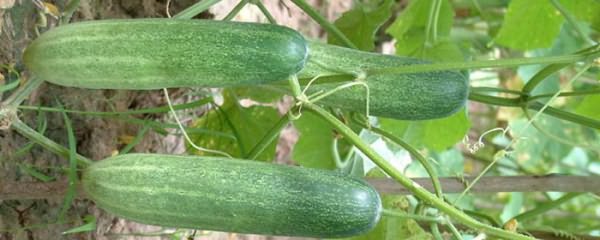
Cultivation in greenhouses of cucumbers begins with the correct choice of the variety of this vegetable.
Advice. You need to choose varieties of cucumbers, focusing on what time of the year the vegetable will be grown.
Peculiarities:
At the moment there are the most popular varieties of cucumbers for greenhouses:
Advice. In order to avoid questions about why cucumbers grow poorly in a greenhouse in a particular season of the year, you need to choose the right variety or provide the necessary equipment inside the structure.
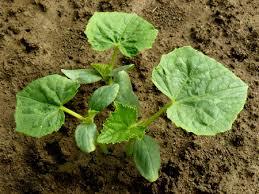
Before growing cucumbers in a greenhouse, you need to prepare the soil for this. It must be fertilized and cleared of various vegetation, which may adversely affect the development of the root system of cucumbers.
So:
Advice. So that the soil does not dry out and the root system has the opportunity to develop freely, sawdust is added to it, which counteracts this phenomenon.
When fertilizing, minerals are used. For a more enhanced growth of cucumber varieties, saltpeter is often used, but only with a large-scale greenhouse business.
The technology of growing cucumbers in a greenhouse is characterized by the use of two methods of planting them:
For this you will need:
What you need to know:
Advice. Seed planting is best used in a greenhouse during the warm season.
This method of cultivation is characterized as very long and in the process it may turn out that some seeds did not sprout. This will affect productivity.
Advice. Seedlings are fertilized when their first leaf appears and the last one a few days before transplanting into greenhouse soil.
Evidence that the root system of cucumber seedlings feels comfortable in the ground will be new leaves and the beginning of flowering.
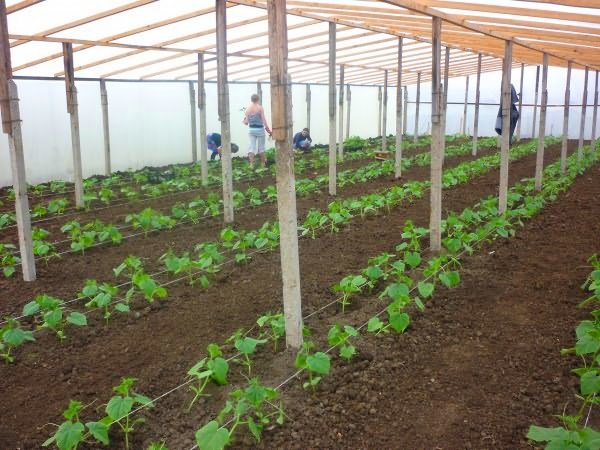
For such work, you will need an improvised garden tool:
Carrying out work:
Advice. The most optimal distance between each cucumber bush is 30-50 cm.
Planting seedlings is carried out in such a way that the root system remains in the soil in which it grew. That is, transplantation occurs with a lump of soil, which was in a peat cup or other container.
Irrigation of seedlings after planting can be carried out only after a few days. It must acclimatize in greenhouse conditions.
You can fertilize seedlings after they are accepted. As for the irrigation system, it is best to give preference drip irrigation, which will saturate the root system with a sufficient amount of moisture and save money, as it is the most economical.
parnik-teplitsa.ru
Every greenhouse or building needs maintenance, especially your greenhouse. For effective work in spring and good preservation of the greenhouse, it is necessary to carry out conservation of the greenhouse in winter. If you want to pay less for the repair of a greenhouse, then you should devote more time to heating equipment. Repair is very expensive, so it is better to prevent it.
Every year you clear your garden of various stems and other debris, and dig out beds for the spring season. Before cleaning the greenhouse, you must harvest. To clean the greenhouse you need:
In order not to waste energy in the spring (during the period of seedlings and planting material), it is better to disinfect the greenhouse in the autumn. Most people use smoke bombs to disinfect spaces. They destroy all sorts of fungi, mold and the most nasty diseases. To be effective, it must be used correctly. Then you will clean the greenhouse from various insects and other pests.
First you take smoke bomb and set fire to it on some metal piece in the greenhouse. Check the greenhouse for tightness and tightness of the closure, as the smoke should not spread outside the greenhouse. A checker can smolder from an hour to an hour and a half, and it will be possible to ventilate only after 24 hours. It is usually necessary to ventilate the greenhouse for a couple of days.
In summer and spring, polycarbonate should be washed with outside, wipe wherever there is dirt. In some cases, you need to tweak something somewhere. For prevention, you can also use chalk to spray the polymer, thereby preventing your vegetables from burning.
In the fall, you do the work described above: clear debris, disinfect and wipe the polycarbonate from the outside, that is, in the fall you prepare the greenhouse for conservation.
IN winter period it is allowed to remove the polymer sheets with great care. You must clear the greenhouse from snowdrifts around the entire greenhouse, as well as from above.
How to perform the conservation of the greenhouse in the winter
If you have done the conservation incorrectly, then this can cause some damage to the indoor garden. So that your greenhouse does not turn out to be broken, you need to make an emphasis from the pole. Install it so that one side of it rests against the profile of the greenhouse above, and the other side against the ground. Side vents or pistons (if any) must be removed for the winter.
During the cleansing of the greenhouse, you should try to avoid various kinds of blows, since only when proper care The greenhouse will serve you for many years.
Now let's talk about planting in a greenhouse. Let's talk about how to plant tomatoes.
First you must prepare the seeds for sowing. If they are bright, they do not need to be treated with a solution. Other seeds must be treated with phytosporin, put in a solution for 20 minutes. Fitosporin is prepared according to the instructions. After processing, you can try to place it in a solution with a growth stimulator, and then plant it in pre-prepared soil.
We do not recommend that you sow tomatoes two years in a row, as last year's infectious diseases may have remained in the soil and can infect them. To grow tomatoes in a greenhouse in winter, you need to turn on the light for them, otherwise they will not bloom at all and there will be no harvest.
You can grow seedlings for cucumbers either at home or in some other greenhouse. If you plant seedlings in a greenhouse without special heating, then not earlier than the beginning of May.
As soon as the soil in the greenhouse warms up well, then you can immediately start making holes, spill them with potassium permanganate, as well as lukewarm water. As a rule, seedlings should be planted so that the lump is 1.5 cm above the soil. The root or neck should not touch the soil, as infections are common there.
5 days after planting the cucumbers and forming their stem, the seedlings are tied to a trellis. After some time of stem formation, it is necessary to pinch the stem heads.
koffkindom.ru
Plan the cultivation of this vegetable based on what kind of crop you want to harvest, how soon to harvest it, and how beautiful it should be. When choosing a variety, industrial greenhouses, for example, are guided by how well the fruits are then stored during transportation, how keep their trade dress. All this is rarely interesting to an ordinary summer resident, and therefore it is not worth focusing on the “most purchased varieties”.
When choosing seeds for planting in your personal greenhouse, proceed from what is important for you in the first place: taste, yield, salad and pickling qualities, disease resistance, ease of cultivation? The fact is that there are seeds specifically for greenhouse farms, which are only interested in yield and presentation, there are seeds for home cultivation, which are most suitable for salting conservation, and the market offers simply breeding novelties that can give the most unexpected result. It's simple: when buying hybrids for industrial cultivation, do not expect either taste or quality.
So that you understand the notation a little, let's reveal this mysterious F1. This is how hybrids are designated, “F” in Italian is the first letter of the word “children”, and “1” is the first generation. Hybrids are always more expensive than varieties because such plants are obtained by crossing two varieties already.
What is good, the seeds of modern hybrids from well-known companies do not need to be disinfected or hardened - usually all this has already been done. And there is even a difference in how to form hybrids and varieties.
So, if you planted varietal cucumbers, then when 4-5 leaves appear in plants, pinch the top. Thanks to this method, side shoots will begin to grow much more actively, which will have a good effect on the future harvest. What's the secret? There are more female flowers on the lateral processes, and fruits are formed from them. But if you plant hybrids, then we don’t touch the central stem, and we pinch only the lateral stepchildren. We leave two leaves on the first, four on the second, up to 6 pieces on the third, and up to 8 on the fourth.
But be aware that it makes no sense to collect seeds from hybrids for subsequent planting - you will grow several dissimilar plants at once, which will either give a weak harvest, or even leave it without it.
The varieties are divided into both greenhouse and open ground. Many of them are suitable for those and for those conditions, but some varieties have a strict purpose. So, for open beds, hybrids are usually bred that are well adapted to the wind and low humidity. And for greenhouses, the seeds are well treated to protect against diseases and pests, which are especially fond of a humid and hot microclimate.
In addition, those that should grow in direct sunlight on seven winds are completely unadapted to the difficulties of closed wet ground and quickly begin to hurt.
According to economically useful features, cucumber varieties are divided into pickling, salad and universal. Salads are not salted, because. those lose their properties, and pickling fresh ones are a bit rough.
The sweetest and most tender, ideal for a salad, are Armenian long cucumbers of an unusual yellow-green color. Dutch ones also have a wonderful taste, with a thin skin and without coarse seeds. Gaining their popularity and lemon-cucumbers, yellow, round, sweet and without seeds. But the Persian ones are similar to kibri, delicate in taste and generally without a crunch.
So, early and super early are those varieties that are intended for a quick harvest.
By maturity, the varieties are as follows:
And usually varieties with different ripeness are planted in the greenhouse - in order to harvest as long as possible.
According to the method of pollination, varieties, like hybrids, are bee-pollinated and parthenocarpic, i.e. self-pollinated. For the former, pollinating insects (bees, bumblebees) are needed, or you will have to wield the brush yourself, while the latter have both the pistil and the stamen in the same flower:
Parthenocarpy is the ability of a plant to set fruit without pollination. The term "self-pollinating" for them is not entirely correct: such cucumbers do not pollinate at all, they have ovaries themselves. This is a valuable property for greenhouse varieties, especially winter ones. Even by fruits, you can easily recognize these varieties - they do not have seeds at all, which you usually see when cut. Although some parthenocarpic species have a few seeds, in some part of the fruit, which is why it turns out to be pot-bellied or pear-shaped.
Of the parthenocarpic varieties that all flowers give with the ovary, the Dutch "Hector" is considered the best. Cucumbers do not turn yellow, do not outgrow, grow small and the bush itself does not require a garter.
For a greenhouse, of course, self-pollinated varieties are more suitable, because there is less trouble with them. But many adherents of “everything natural and natural” are sometimes ready to walk around with tassels for days and nights, just to grow a “natural” variety. And, I must say, with a competent approach, the harvest will turn out to be much larger and better than any scientific agronomist could have planned for his hermaphroditic offspring.
Experienced gardeners are able to distinguish even seeds by female and male type. So, the seed of a boy cucumber is flat on one side, and there is a slight break in only one plane, while the female one has a break in the faces on both sides, and the seed itself looks a little pot-bellied.
It is possible to plant different varieties of cucumbers for greenhouses and greenhouses, but only all of them must be either parthenocarpic or bee-pollinated. Note: some authors of books on gardening even recommend mixing these two species, some are categorically against it, because. if parthenocarpic ones receive stronger pollen from pollinated ones, then the fruits will be damaged (scattered from uneven filling with seeds).
There are varieties and shade tolerance. So, if you buy hybrids for the spring-summer period, such cucumbers are photophilous and will bear fruit well only in good sunlight. But, if some outbuildings or trees give you shade, there will be little fruit.
But winter cucumbers tolerate shade well and feel quite comfortable in a greenhouse even in January, but it makes no sense to sow them in the middle of summer: firstly, the fruits will be late, and secondly, such varieties are in no way protected from typical summer diseases.
There are differences between varieties in terms of cold resistance. And this is already one of the most important indicators for different regions, because there is a difference, do you grow cucumbers at the equator or in Siberia? Even with good thermal insulation in the greenhouse, plants can catch a cold - in the morning, for example, when cold dew and condensate accumulate on plastic wrap. And therefore, at the end of summer, only cold-resistant cucumbers should be planted, which are more protected from viral diseases (physiological weakening occurs in plants when hypothermia occurs).
Recently, varieties with the so-called beam fruiting have been increasingly produced, when several ovaries develop at once in the leaf axil. These are short-fruited varieties with particularly intensive fruiting, which is important to properly care for. What is their advantage? In a huge number of small cucumbers, which are great for pickling.
Cucumbers also differ on such a basis as branching - the intensity of growth of lateral shoots. There are three groups of such: with good branching, with moderate and weak. When good, side shoots appear from almost every node from the main stem, they are long and need to be pinched. With moderate branching, there are many lateral shoots, but they are short. And cucumbers with weak branching form very few side shoots, all of them with short internodes, "bouquet". But remember that branching intensity depends not only on genetics, but also on external conditions. So, at low temperatures and shading, side shoots grow weaker, and in sunny weather and with generous watering, they grow bolder.
If you decide which cucumbers are best planted in your own greenhouse so as to get the maximum yield in a short time, literally in 3-4 weeks, then take weakly branching hybrids. Only they need to be planted densely, 5-6 plants per square meter, instead of the standard 2-3. If you need a crop within one month, then plants with moderate branching will suit you. But for pickling, when the best cucumbers are harvested in August, when there is the most sugar in fruits, hybrids with rich branching are suitable for you.
Another difference between varieties is the duration of fruiting. If you are growing for sale and it is important for you to get a good harvest in a short period, then buy seeds of early maturing sprinter hybrids that will produce most of the fruit in the first month. But in order to regularly collect small cucumbers for pickling and not to rush anywhere, use hybrids with the so-called extended fruiting period.
When buying cucumber seeds, pay special attention to the information from the manufacturer, which is usually indicated on the package.
When choosing seed bags for a greenhouse, pay attention to the image of the fruit itself. Namely, the spikes. The spines may be dense or almost absent, the spines may be small or quite large. And even different in color - white, black and brown.
By the way, it is not recommended to soak the seeds processed at the factory, so as not to wash off the color protection from them. But many summer residents still break the rule by using a simple damp gauze that does not erase anything. After two days, the seeds simply have a tail, and the color remains the same.
Interestingly, in Russia they really love cucumbers with thorns, considering them "real". But in Europe, they prefer fruits with a smooth skin, while the "pimple" ones are called cucumbers "in a Russian shirt."
Where does bitterness come from in cucumbers? This is the merit of a special substance - the alkaloid cucurbitacin, which is most actively produced in dry, hot weather, especially if you watered the plants little. Sometimes the soil is also to blame, or rather its composition. In simple terms, bitterness accumulates under the green skin of cucumbers if the active vegetation process slows down and the fruits stop growing within a few days.
Most of all cucurbitacin accumulates in varieties with dark green fruits. Although sometimes bitter cucumbers are grown on purpose - according to some reports, these kill cancer cells in the body. If that's what you want, don't use the newest varieties and just water less. After all, modern varieties, thanks to breeders, have practically lost the ability to accumulate cucurbitacin, and therefore are not bitter.
There are a lot of varieties and hybrids of greenhouse cucumbers, but we will note those that are most popular today:
But if you want to experiment, you can grow white cucumbers in your own greenhouse. These are unusual hybrids that are gradually gaining their popularity. One of them is the “Bride F1” variety, whose fruits are tender, fragrant, and behave well in conservation.
Many beginners in this business are also interested in "Chinese" cucumbers. Note that in the greenhouse they do not always grow evenly, the presentation is almost completely absent, but it will definitely please the taste. Most best grade- "Beijing", which gives tender juicy fruits with small seeds. This variety bears fruit until frost, even in an unheated greenhouse.
In any case, when choosing, give preference to varieties that are designed specifically for your region. These are more designed for specific weather conditions, resistant to local diseases and bear fruit on time.
The most important first step is to choose good seeds. In fact, this is another task, because it is important to acquire the planting material that:
And finally, the last one. You may have already noticed that the same variety can be found in a variety of packages. We strongly advise you not to purchase ordinary packaged transparent bags with liners, because. the simpler the packaging itself, the easier it is to stamp fake low-quality material somewhere in the basement. But serious manufacturing companies that value their reputation produce seeds of a different quality, and packages with them are recognizable, have different degrees of protection against counterfeiting and are more expensive. In addition: low-quality seeds sold may also be infected.
Did you get good seeds and exactly the variety you wanted? Then go!
Vasha-Teplitsa.ru
Nowadays, almost everyone has their own land plot in the form of a dacha or a garden where various crops are planted, including cucumbers and tomatoes, and of course, flowers. You can grow such plants only for yourself or for subsequent sale. The latter option can be a very profitable type of business. In both cases, in order to get a good harvest, it will be necessary to rationally organize the technology of growing plants. Tomatoes, cucumbers, flowers can be grown both in the open field in the garden and in the greenhouse.
The layout of the beds in the greenhouse.
Greenhouses and greenhouses today are very widespread due to the fact that by maintaining optimal indicators of humidity and air temperature in them, you can get a higher and higher quality crop. The greenhouse itself must also meet certain requirements. Because of all this, the priority when growing a tomato or other vegetables is the arrangement of the greenhouse itself, its proper construction. It is necessary to consider in more detail how planting in a polycarbonate greenhouse is carried out, the features of caring for crops, and the rules for installing a greenhouse.
Scheme drip irrigation in a greenhouse.
As mentioned above, to plant vegetables or flowers in a greenhouse, the first step is to allocate a site and build the greenhouse itself. The site must be open and sufficient in area. Almost any size of the greenhouse can be made, while the optimal width should be no more than 5 m, while there are no restrictions on the length. The site should be well insolated, since the sun's rays are necessary for plant growth and photosynthesis. After the territory is selected, you will need to build a foundation.
Polycarbonate greenhouses are gaining more and more popularity nowadays. This building material has many advantages. Firstly, it is quite easy to install, and secondly, it has good thermal insulation properties, which means that powerful heating in the greenhouse is not required. Polycarbonate transmits the sun's rays well and scatters them. Fourth, unlike ordinary glass, it is an impact-resistant material, and besides, it is flexible. Its biggest advantage is that it is financially affordable. To build such a greenhouse, it is advisable to organize a strip or monolithic foundation, the first option is simpler and cheaper.